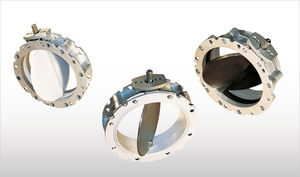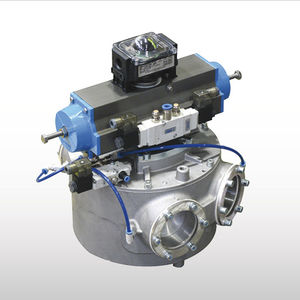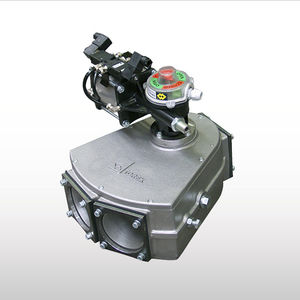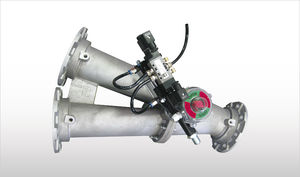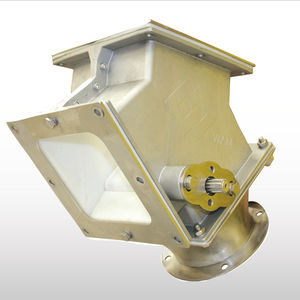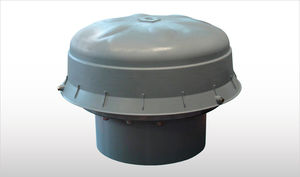
Grain storage valve VHS-Cfor silos
Add to favorites
Compare this product
fo_shop_gate_exact_title
Characteristics
- Applications
- for grain storage
- Other characteristic
- for silos
Description
As its predecessor, the VHS-type, the VHS-C Pressure Relief Valve is the last safety net when abnormal pressure conditions endanger the silo structure. This is why sudden excess or suction pressure inside the silo has to be dealt with instantly. Even though ideally a VHS-C Pressure Relief Valve should never have to go into action, it must be efficient and reliable if needed.
Description
VHS-C Pressure Relief Valves – the evolution of the VHS-type – consist of a cylindrically shaped polymer body with flanged connection spigot to the silo, an exhaust outlet elbow for duct connection, an elastic membrane able to re-establish pressure balance instantaneously, a counterweight kit to keep the valve closed under normal conditions, and a weather protection cover.
Function
The counterweight-loaded VHS-C Pressure Relief Valve has one decisive advantage over WAM’s other pressure relief valve, the VCP. Due to the moment of inertia of the helical springs on the VCP-type pressure relief valve, pressure balance is re-established quickly but not instantaneously. The VHS-C, on the other hand, does the job in real time. Through an interplay of pressure on different surface areas on both sides of a membrane fitted inside the valve casing, perfect pressure balance is achieved. In the event of excess pressure this interaction enables air from inside the silo to flow back into the atmosphere, whereas in case of suction pressure the air penetrates from the atmosphere into the silo.
Catalogs
No catalogs are available for this product.
See all of SAVECO‘s catalogsExhibitions
Meet this supplier at the following exhibition(s):


Related Searches
- Control valve
- Electric pump
- Manure pump
- Submersible pump
- Vertical pump
- Electric valve
- SAVECO stainless steel valve
- Pump with cutter
- Regulating valve
- SAVECO pneumatic valve
- SAVECO grain storage valve
- Cast iron valve
- Wall penstock
- SAVECO steel valve
- Metal wall penstock
- High-pressure valve
- Sluice wall penstock
- Sand separator
- Centrifugal sand separator
- Silo valve
*Prices are pre-tax. They exclude delivery charges and customs duties and do not include additional charges for installation or activation options. Prices are indicative only and may vary by country, with changes to the cost of raw materials and exchange rates.


